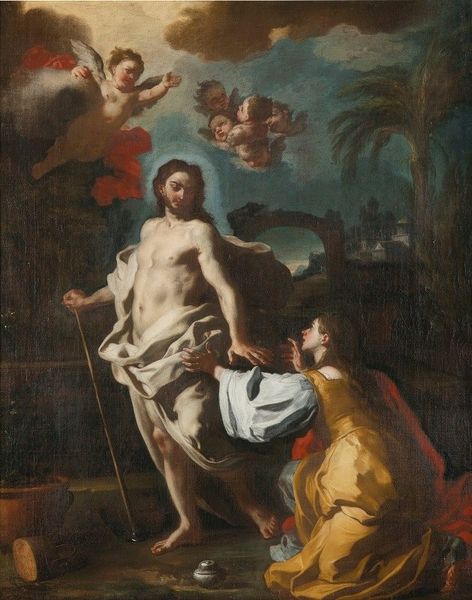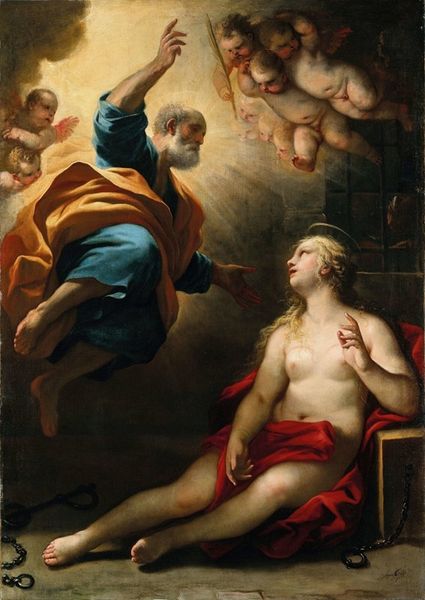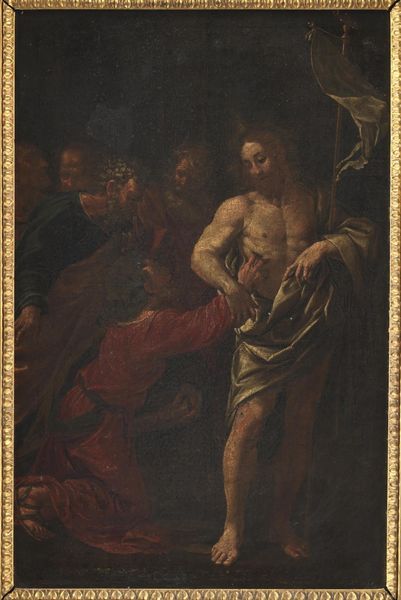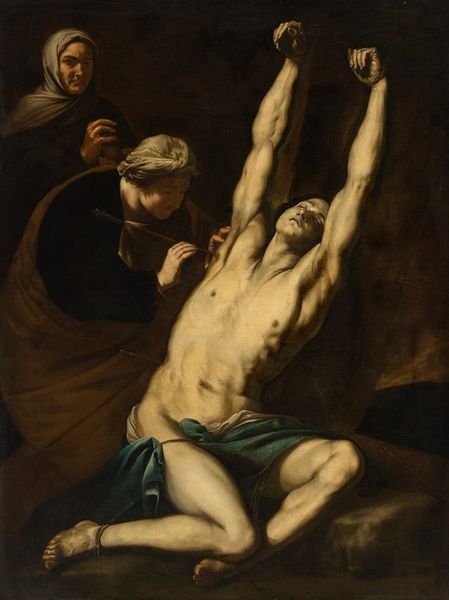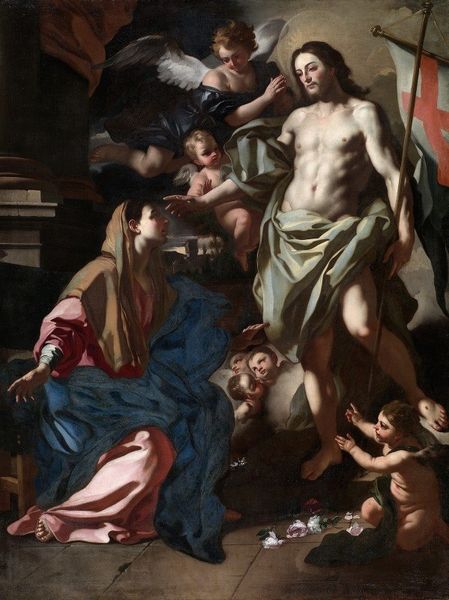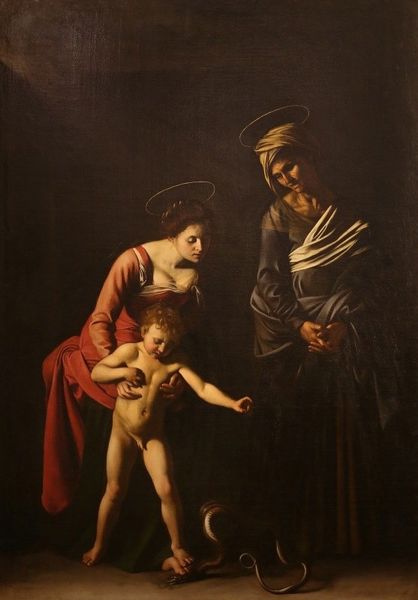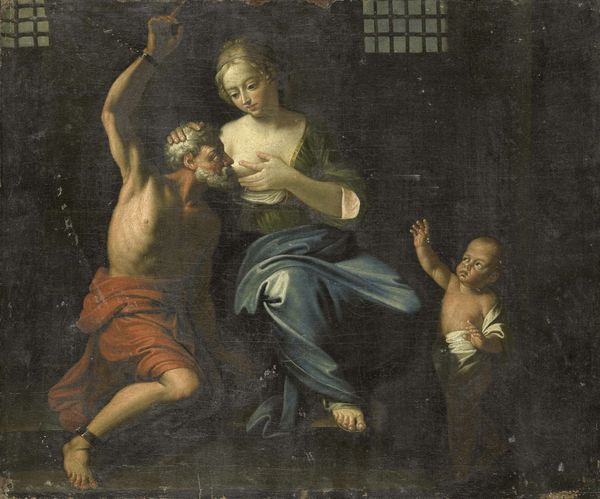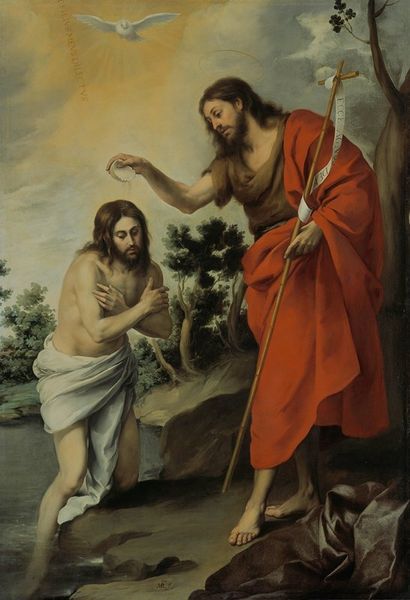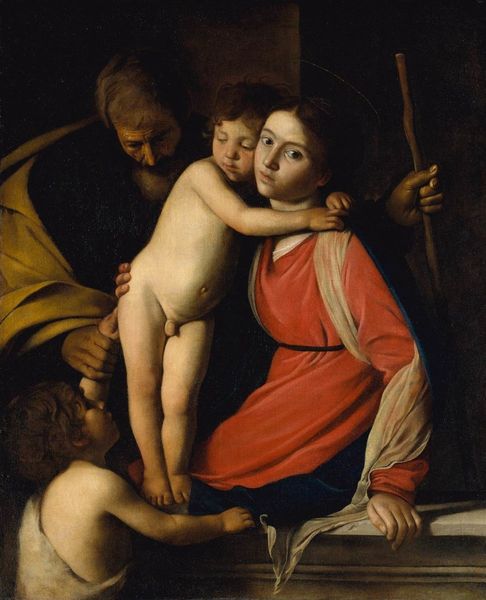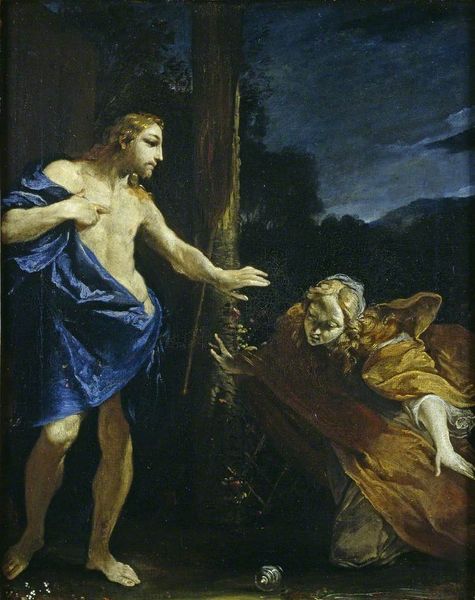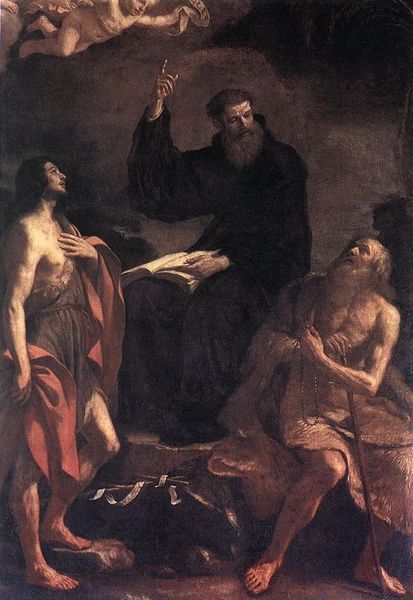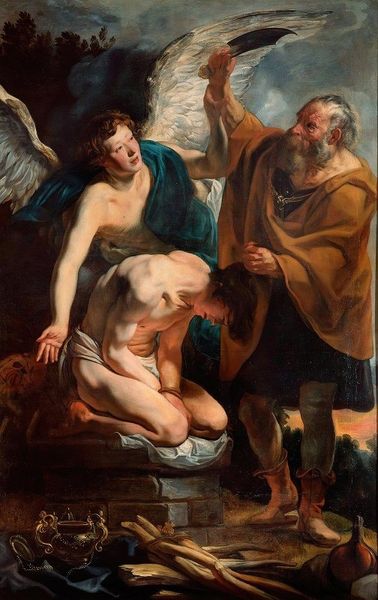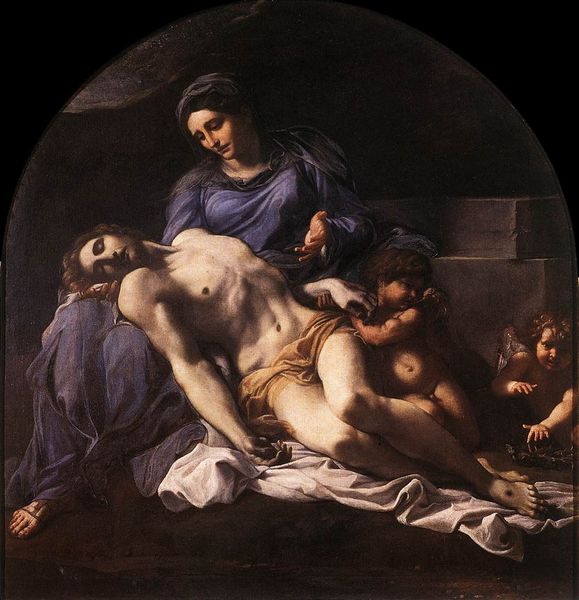
painting, oil-paint
#
portrait
#
narrative-art
#
baroque
#
painting
#
oil-paint
#
figuration
#
jesus-christ
#
underpainting
#
christianity
#
history-painting
#
academic-art
#
christ
Dimensions: 34 x 31 cm
Copyright: Public domain
Curator: This oil on canvas is titled "Christ The Column" by Bartolomé Estebán Murillo. I’m immediately struck by the somber mood created through the artist’s somber handling of light and shade, wouldn’t you agree? Editor: Absolutely. There is something haunting in the stark contrast between the pale flesh of Christ and the deep shadows encompassing the scene. And observe the deliberate placement of Christ near the fluted column; it is central, a visual anchor. What does the column signify to you in relation to the figure of Christ? Curator: Well, the column is both a literal instrument of Christ's suffering, evoking themes of imprisonment and torment, but it's also an ancient symbol of strength, resilience and the foundation of the church itself. Remember the Temple pillars named Jachin and Boaz. The column as support takes on an entirely new symbolic dimension when paired with the bound figure of Christ. What I find interesting, from an art historical perspective, is the traditional use of the column, a Greco-Roman structure, in Christian art—a subtle blending of visual cultures. Editor: And this layering is intensified by the subdued palette; a symphony of blacks, grays and earth tones—enhancing a sense of penitence. Observe, too, how the lines created by the ropes and Christ's contorted body draw the eye downward. The composition emphasizes a sense of gravity, both physically and spiritually. The gaze of the older figure draws my eyes; he seems burdened. Is this meant to represent St. Peter in remorse perhaps? Curator: I think so; the book with a pair of keys could allude to the symbolic handing of the keys of heaven. You see a direct connection with him through his presence, guilt, remorse… It's not merely a historical representation but a meditation on faith, failure, and divine mercy— themes heavily resonant within Christianity. The underpainting also accentuates the drama here. The artist also wanted the divine to have a human scale. Editor: I am struck by your final observation because the figures seem deliberately brought low, closer to our immediate comprehension. Through a strict organization of tonal planes, the figures emerge almost sculpted. As we look closely, there’s a beautiful paradox: though “Christ the Column” depicts suffering and possible failure, its rigorous composition hints at a grander theological design, suggesting structure and strength from pain. Curator: I agree; reflecting on the art's themes in our world, it continues to evoke questions about power, suffering, and the nature of forgiveness. Editor: Exactly. And so, it retains relevance through its masterful formal vocabulary.
Comments
No comments
Be the first to comment and join the conversation on the ultimate creative platform.
